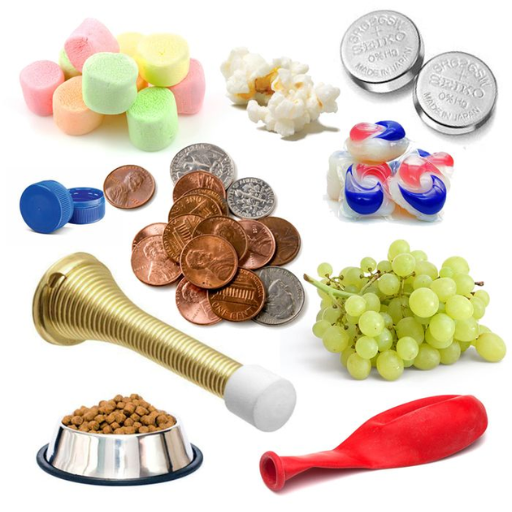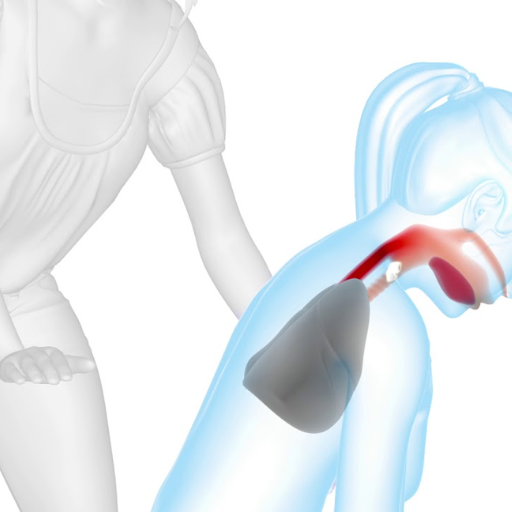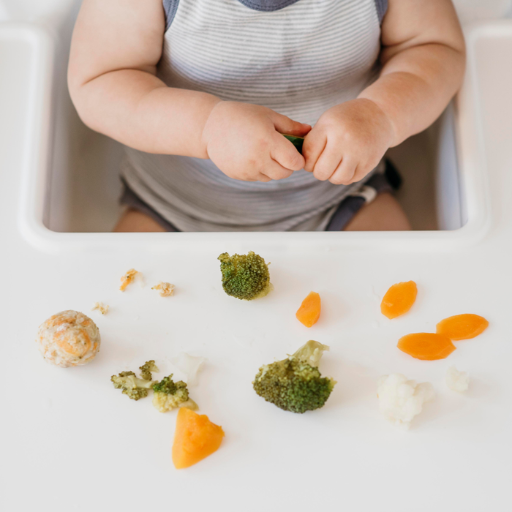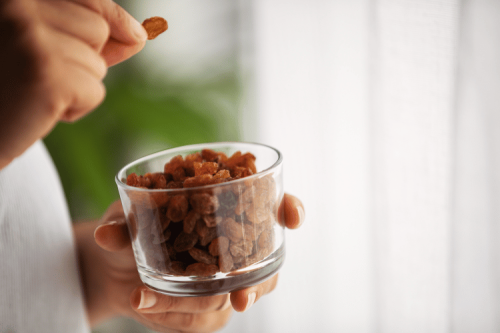
Every parent enjoys having a toddler despite the many challenges associated with the exciting growth and learning stage. This is also the period when they should be extremely cautious about anything that might bring harm to their child. Out of all the dangers that young children are exposed to, choking remains one of the highest, hence the need for parents to be all the more active and prepared. This guide is thus designed to assist parents in recognizing and averting choking hazards which are common in almost every home or household setting. Choking is not a danger that parents should ignore, and the effective management of risk factors can help in creating a safer physical environment for toddlers.
 Choking is especially common among young children who are three years old and below. Because of their smaller size, they also have oral tendencies that lead them to explore the surrounding world. Therefore, it is no surprise that while we do not think so much about them, babies and toddlers will tend to choke on small toys or their parts, marbles, coins, and anything else which can easily obstruct their airways. Whole grapes are not cut into small pieces; nuts, popcorn, hard candies, chunks of meat and cheese, and any other food item that can be simply swallowed without chewing, but that is bigger than the hole formed by the mouth. Also, anything like buttons, & beads are small and children might swallow them by accident if they are left lying around the house. Parents shouldn't leave their toddlers unattended during meals or whilst playing and instead keep choke-producing materials away from reach.
Choking is especially common among young children who are three years old and below. Because of their smaller size, they also have oral tendencies that lead them to explore the surrounding world. Therefore, it is no surprise that while we do not think so much about them, babies and toddlers will tend to choke on small toys or their parts, marbles, coins, and anything else which can easily obstruct their airways. Whole grapes are not cut into small pieces; nuts, popcorn, hard candies, chunks of meat and cheese, and any other food item that can be simply swallowed without chewing, but that is bigger than the hole formed by the mouth. Also, anything like buttons, & beads are small and children might swallow them by accident if they are left lying around the house. Parents shouldn't leave their toddlers unattended during meals or whilst playing and instead keep choke-producing materials away from reach.
 In order to avoid choking in toddlers, professionals recommend the use of age-appropriate toys without small, detachable parts while safety standards are strictly followed. Children should not be left unattended, especially during play with small objects, which may be choking hazards. Explain to your child why they should not chew on non-edible items and inform them to also check toys and areas where they play for any touching threats. The use of extra care and diligence on the part of the parent can greatly reduce the chances of any choking episodes.
In order to avoid choking in toddlers, professionals recommend the use of age-appropriate toys without small, detachable parts while safety standards are strictly followed. Children should not be left unattended, especially during play with small objects, which may be choking hazards. Explain to your child why they should not chew on non-edible items and inform them to also check toys and areas where they play for any touching threats. The use of extra care and diligence on the part of the parent can greatly reduce the chances of any choking episodes.
 Children’s respiratory systems are still developing; they are at higher risk of choking on small, round, and hard foods like whole grapes, unshelled nuts, and hard or small candy balls. Foods like cherries, tomatoes, or raw carrots are also very hard or almost impossible to cut into small pieces before eating, as recommended for children. Many parents are unaware of how dangerous it is to give small hot dogs, sausages, or any other smooth and rounded cylindrical cut into pieces of a size not suitable for young children. These foods pose even more risk of choking to children and infants as they do not have the ability to chew solid food. It is, therefore, very important to take instant action to prevent these situations by cutting these foods into small pieces and monitoring children when they are eating so that excitement doesn't increase the chances.
Children’s respiratory systems are still developing; they are at higher risk of choking on small, round, and hard foods like whole grapes, unshelled nuts, and hard or small candy balls. Foods like cherries, tomatoes, or raw carrots are also very hard or almost impossible to cut into small pieces before eating, as recommended for children. Many parents are unaware of how dangerous it is to give small hot dogs, sausages, or any other smooth and rounded cylindrical cut into pieces of a size not suitable for young children. These foods pose even more risk of choking to children and infants as they do not have the ability to chew solid food. It is, therefore, very important to take instant action to prevent these situations by cutting these foods into small pieces and monitoring children when they are eating so that excitement doesn't increase the chances.
 When my toddler starts choking, the first thing I do is take a deep breath so that I do not panic and am able to help my child. I check whether our kid is able to cough or breathe, as a hard cough may help in moving the obstruction. If they are unable to do so, I throw them over my knee and give abdominal thrusts by placing my hands on each side of the child and pushing inward and upward. However, with an infant, this is not done; I would place an infant over my forearm, with their head supported, and strike them between the shoulders. Nevertheless, in all cases, when the kid binges on the food, I reach for the phone to contact a medical service immediately. When I did call for help, I ceased all forms of aggression and spoke to the child calmly, assuring him that everything would be okay.
When my toddler starts choking, the first thing I do is take a deep breath so that I do not panic and am able to help my child. I check whether our kid is able to cough or breathe, as a hard cough may help in moving the obstruction. If they are unable to do so, I throw them over my knee and give abdominal thrusts by placing my hands on each side of the child and pushing inward and upward. However, with an infant, this is not done; I would place an infant over my forearm, with their head supported, and strike them between the shoulders. Nevertheless, in all cases, when the kid binges on the food, I reach for the phone to contact a medical service immediately. When I did call for help, I ceased all forms of aggression and spoke to the child calmly, assuring him that everything would be okay.
 Most children develop more effective chewing and swallowing functions by the age of four, which is when the risk of choking hazards can be considered to be fairly low. At this age, children have more often than not developed molars that would enable them to chew their food more efficiently. They also learn not to speak or laugh with food in their mouths, which diminishes the chances of choking. However, The risk still exists, and children still need to be supervised when eating since it is possible to still have access to foods that could be a choking hazard.
Most children develop more effective chewing and swallowing functions by the age of four, which is when the risk of choking hazards can be considered to be fairly low. At this age, children have more often than not developed molars that would enable them to chew their food more efficiently. They also learn not to speak or laugh with food in their mouths, which diminishes the chances of choking. However, The risk still exists, and children still need to be supervised when eating since it is possible to still have access to foods that could be a choking hazard.
 The correct chewing technique for toddlers can be attained by employing patience, some supervision, and the right conditions. First, give smaller, chewable, and swallowable portions of food suitable for the age of your kid. You can tell your child to take a bite and chew slowly to yourself and follow a similar practice as well. Minimize distractions during mealtimes and focus the attention of your infant on the food while making sure he avoids moving from his seat. Supervise your infant at all times during eating so you are ready to assist straight away when required, and keep increasing the textures in the chewable as the toddler matures to help him adapt-- chewing activities gently and to help with more chewing activities later on.
The correct chewing technique for toddlers can be attained by employing patience, some supervision, and the right conditions. First, give smaller, chewable, and swallowable portions of food suitable for the age of your kid. You can tell your child to take a bite and chew slowly to yourself and follow a similar practice as well. Minimize distractions during mealtimes and focus the attention of your infant on the food while making sure he avoids moving from his seat. Supervise your infant at all times during eating so you are ready to assist straight away when required, and keep increasing the textures in the chewable as the toddler matures to help him adapt-- chewing activities gently and to help with more chewing activities later on.
What Are the Common Choking Hazards for Babies and Toddlers?
 Choking is especially common among young children who are three years old and below. Because of their smaller size, they also have oral tendencies that lead them to explore the surrounding world. Therefore, it is no surprise that while we do not think so much about them, babies and toddlers will tend to choke on small toys or their parts, marbles, coins, and anything else which can easily obstruct their airways. Whole grapes are not cut into small pieces; nuts, popcorn, hard candies, chunks of meat and cheese, and any other food item that can be simply swallowed without chewing, but that is bigger than the hole formed by the mouth. Also, anything like buttons, & beads are small and children might swallow them by accident if they are left lying around the house. Parents shouldn't leave their toddlers unattended during meals or whilst playing and instead keep choke-producing materials away from reach.
Choking is especially common among young children who are three years old and below. Because of their smaller size, they also have oral tendencies that lead them to explore the surrounding world. Therefore, it is no surprise that while we do not think so much about them, babies and toddlers will tend to choke on small toys or their parts, marbles, coins, and anything else which can easily obstruct their airways. Whole grapes are not cut into small pieces; nuts, popcorn, hard candies, chunks of meat and cheese, and any other food item that can be simply swallowed without chewing, but that is bigger than the hole formed by the mouth. Also, anything like buttons, & beads are small and children might swallow them by accident if they are left lying around the house. Parents shouldn't leave their toddlers unattended during meals or whilst playing and instead keep choke-producing materials away from reach.
Identifying Potential Choking Hazards
With this responsibility comes the task of being careful whilst scanning the environment. The most common ones are usually parts of tiny toys: things that become dangerous by getting misplaced or dislodged. It is very important to regularly check for any big or small items that a toddler can easily choke on. These dangers do not disappear as a child grows older but are embedded in the child’s world and perspective. In addition, children should be fed with pieces of food that are small enough for them to chew safely. A person can practice the emotion of awareness in the beginning; however, that alone is not sufficient. Every designed space needs to have that uncluttered assurance.Foods to Avoid for Young Children
Considering that this area of expertise combines childhood safety with risk reduction, it is my opinion that particular foods should be avoided for infants so that the possibility of choking and other dangers are minimized. The main parameters are:- Size and Shape:Сould foods be made small in size and soft so as to be chewable? What round or harsh foods should be avoided? Round or whole foods such as grapes, nuts, or popcorn and large pieces of cheese or meat should be avoided. Instead, they should be chopped into smaller, manageable portions for easier consumption.
- Consistency: Would sticky substances such as peanut butter be a choking threat? Peanut butter can be dangerous and hard to swallow. It can be made less choking due to a spread of thin amount or by combining with other food substances.
- Texture: Young children will not be able to chew crunchy, firm foods such as raw carrots and apples, so these must be provided to them either steamed or cut into thin strips, which will make it easy for the children to chew.
- Potential for Swelling: Certain foods, for instance, marshmallows have a tendency to increase in size when in the throat and thus are a potential choking hazard. These should either be avoided for kids or given under expert supervision and only a little amount that would not pose a risk of choking to the child.
Toys with Small Parts: Risks and Recommendations
Given your industry expertise in childhood safety, it is important to be familiar with children’s small toys and parts hazards and decisive measures for their prevention. Such hazards and recommendations can be classified into specific parameters:- Choking Hazard: Young children can swallow or inhale small parts and choke on them. If a toy contains small components then it must be marked “not for children under 3 years”, always adhere to the age recommendation provided on the packaging of the toys.
- Size and Shape: Toys that contain small round parts like marbles or beads are among the greatest dangers. Since they can easily fit into their throats, these should not be given to young children. Provide children with toys that are larger than their mouths to help lessen the risk.
- Material Durability: Toys composed of harmful substances which can easily be broken into small pieces should also be avoided. Such toys should regularly be examined for any wear out and damaged ones should be disposed off to prevent the risk of small parts detaching.
- Age Appropriateness: Ensure that you select an age appropriate toy for a child by considering his or her age range as well his or her developmental stage and the likelihood of mouthing/ Oral displacement of the toy. Older children toys have small detachable parts that younger children may not be able to use.
- Supervision and Education: When young children play with toys, especially those with small parts, they are never left unsupervised. Teach children not to put objects in their mouths unless they are food.
How Can I Prevent Choking in My Toddler?
 In order to avoid choking in toddlers, professionals recommend the use of age-appropriate toys without small, detachable parts while safety standards are strictly followed. Children should not be left unattended, especially during play with small objects, which may be choking hazards. Explain to your child why they should not chew on non-edible items and inform them to also check toys and areas where they play for any touching threats. The use of extra care and diligence on the part of the parent can greatly reduce the chances of any choking episodes.
In order to avoid choking in toddlers, professionals recommend the use of age-appropriate toys without small, detachable parts while safety standards are strictly followed. Children should not be left unattended, especially during play with small objects, which may be choking hazards. Explain to your child why they should not chew on non-edible items and inform them to also check toys and areas where they play for any touching threats. The use of extra care and diligence on the part of the parent can greatly reduce the chances of any choking episodes.
Choking Prevention Techniques for Parents
- Supervise Mealtime Closely: Watch your child at all times during mealtime. Make it a point that they eat in a seated position and that they chew food fully before they swallow it. As recommended by the American Academy of Pediatrics, children below the age of 4 have a higher chance of choking on foods such as whole grapes, hotdogs, nuts, and raw vegetables that should be broken into smaller pieces.
- Educate on Safe Eating Habits: Make it a point to educate the child about eating small pieces of food at a time and taking their time to chew the food. The CDC asserts that teaching good practices and working on strong good eating practices can greatly lower the cases of choking.
- Avoid High-Risk Foods: Don’t give children any foods that can pose a choking risk unless they are over four years old; these include hard candies, popcorn, and even whole nuts. These items should be replaced with other safe substitutes, as the American Academy of Pediatrics highlights.
- Perform Regular Toy Safety Checks:Regularly check and – as necessary – remove small parts from toys or items in play which can provide a choking risk. Always ensure that the toys are suitable for the child’s age and level of development as recommended by the Consumer Product Safety Commission guidelines.
- Learn First Aid and CPR: Make sure that you arm yourself with a certification course on pediatric Advanced First Aid and CPR so that you are better prepared. As an example, parents are trained by organizations such as the Red Cross how to deal with choking emergencies and respond to them promptly.
Safe Food Preparation for Babies and Toddlers
- Cut Food into Small Pieces: Cutting food into easily chewable and swallowable portions is one of the best practices to prevent choking on food. Grapes, for instance, should be cut into four pieces, while a hot dog should be cut into two halves. Such measures help prevent the occurrence of choking and block the airway in young children.
- Teach Safe Eating Habits: Parents or guardians should teach children how to say “no” to big bites and instead encourage them to chew their food well. Since kids are still exploring how to grab food and bring it into their mouths, parents should encourage them to practice safe behavior throughout their meals.
- Avoidance of High-Risk Foods: Other foods such as nuts, popcorn, and hard candies are likely choking hazards for children. It is better to avoid them until the child has grown older than four years as this is the age when their chewing ability is quite matured.
- Regularly Check Toys and Eating Areas for Safety: Remind caregivers to regularly check children’s toys for small or detachable parts that could be ingested. The same degree of care should also apply in regard to the safety of the toys and toys should be checked regularly to avoid accidents.
- Education in First Aid: It is crucial to be ready to intervene during a choking incident. A pediatric first aid and CPR program can help you learn all of the relevant skills for certain life situations.
Importance of Supervision During Meal Times
Children, especially toddlers, require very close supervision to ensure their safety and security during meals. This is how you should understand it:- Prevention of Choking: There are some foods that kids do not realize can become dangerous. With supervision during meal times, signs of any choking can be acted upon, and the child can eat in a safe manner. Constant supervision can serve as a reminder for biting off small bits and proper chewing, thus establishing safe eating procedures.
- Encouragement of Healthy Eating Habits: The constant presence of supervision during the meal gives an opportunity to children to be steered towards eating healthy food. The adults can also encourage the kids to sample different foods and help them learn why it is essential to have a wide variety of foods. Such control will create good eating habits for life.
- Monitoring for Allergic Reactions: The child can attempt new foods that may put them at risk of allergies. Supervision of mealtimes makes it easier for you to detect a negative response and take appropriate measures within a reasonable time frame, should one occur.
- Assisting with Proper Nutrition:Supervision also aids in making sure that the child has the right level of nutritional intake. Their eating patterns can be watched and any changes made to their diet to make sure that the child’s body receives adequate amounts of the vitamins, proteins, and others.
- Social Learning and Bonding: Also thwarting solitude is the provision of meals which provide both an opportunity for social interaction particularly in bonding with others. The social aspect is enhanced as meal sharing can cultivate positive eating behavior model and reinforce an enjoyable atmosphere of mealtime.
What Foods Pose the Highest Risk of Choking?
 Children’s respiratory systems are still developing; they are at higher risk of choking on small, round, and hard foods like whole grapes, unshelled nuts, and hard or small candy balls. Foods like cherries, tomatoes, or raw carrots are also very hard or almost impossible to cut into small pieces before eating, as recommended for children. Many parents are unaware of how dangerous it is to give small hot dogs, sausages, or any other smooth and rounded cylindrical cut into pieces of a size not suitable for young children. These foods pose even more risk of choking to children and infants as they do not have the ability to chew solid food. It is, therefore, very important to take instant action to prevent these situations by cutting these foods into small pieces and monitoring children when they are eating so that excitement doesn't increase the chances.
Children’s respiratory systems are still developing; they are at higher risk of choking on small, round, and hard foods like whole grapes, unshelled nuts, and hard or small candy balls. Foods like cherries, tomatoes, or raw carrots are also very hard or almost impossible to cut into small pieces before eating, as recommended for children. Many parents are unaware of how dangerous it is to give small hot dogs, sausages, or any other smooth and rounded cylindrical cut into pieces of a size not suitable for young children. These foods pose even more risk of choking to children and infants as they do not have the ability to chew solid food. It is, therefore, very important to take instant action to prevent these situations by cutting these foods into small pieces and monitoring children when they are eating so that excitement doesn't increase the chances.
Common Food-Choking Hazards for Children
allow me to offer the following explanation with regard to dangerous food predisposing children to choking. First of all here comes the size and also the shape of the food. Small, round, or cylindrical food items such as hot dogs or whole grapes can easily obstruct a child’s airway. Cutting these foods into harmless shapes or forms can go a long way in alleviating this concern. Secondly, the texture is also important. Hard and firm foods like nuts and raw carrots present a choking danger since they may not be chewed enough to be swallowed safely. To reduce choking hazards, you may wish to crush or bake these foods to change their texture. Thirdly, the eating environment also comes in handy. Children should only be allowed to eat while seated and under supervision in a quiet distracting free environment. Encouraging them to chew and swallow their food slowly and well can also reduce the chances of choking. In conclusion, it is best to be continually mindful of the food’s size, shape, and texture and it is also advisable to create a situation which would be controllable in terms of children’s activities at meal times.Tips for Preparing Foods to Avoid Choking Risks
As an authority in the field, let us now try and explain to you how foods can be prepared so as to effectively reduce the chances of toddlers choking and provide you with the simplest steps possible to achieve that:- Modify Size and Shape: Always cut food into small pieces. For example, not only should you cut grapes, cherry tomatoes, and hot dogs into smaller pieces, but you should also cut them lengthwise. The modification in shape in this kind of change is useful because it prevents the food from wedged in the throat of a child.
- Alter Texture: To reduce the risks associated with hard foods, alter their textures rather than completely avoid them. Consider steaming or boiling hard fruits or vegetables such as apples or carrots until they are softer in texture. Nuts also stand the risk of cutting or even choking and so they should be chopped finely or ground to a powder where only small bits remain.
- Create a Safe Eating Environment: Make sure children eat when seated in a quiet place. Do not allow the television or toys into the meal setting so that children get encouraged to eat but slowly and with focus.
- Supervision and Education: When young children are eating, they should be restrained. Ensure older kids understand the need of chewing their food thoroughly and also that they should take small bites for the same purpose.
What Should I Do If My Child Chokes?
 When my toddler starts choking, the first thing I do is take a deep breath so that I do not panic and am able to help my child. I check whether our kid is able to cough or breathe, as a hard cough may help in moving the obstruction. If they are unable to do so, I throw them over my knee and give abdominal thrusts by placing my hands on each side of the child and pushing inward and upward. However, with an infant, this is not done; I would place an infant over my forearm, with their head supported, and strike them between the shoulders. Nevertheless, in all cases, when the kid binges on the food, I reach for the phone to contact a medical service immediately. When I did call for help, I ceased all forms of aggression and spoke to the child calmly, assuring him that everything would be okay.
When my toddler starts choking, the first thing I do is take a deep breath so that I do not panic and am able to help my child. I check whether our kid is able to cough or breathe, as a hard cough may help in moving the obstruction. If they are unable to do so, I throw them over my knee and give abdominal thrusts by placing my hands on each side of the child and pushing inward and upward. However, with an infant, this is not done; I would place an infant over my forearm, with their head supported, and strike them between the shoulders. Nevertheless, in all cases, when the kid binges on the food, I reach for the phone to contact a medical service immediately. When I did call for help, I ceased all forms of aggression and spoke to the child calmly, assuring him that everything would be okay.
First Aid Steps for Choking Incidents
In my opinion, appropriate measures should be taken to deal with choking and other emergencies. As a child safety and first aid consultant, I will demonstrate these actions clearly. Here is my step-by-step method for handling such steps:- Identify the Severity: Begin with an assessment. If the child is capable of strong coughing, encourage him to do so as it may result in expelling the obstruction. But in a case where the child is gasping, unable to talk or cry, it is time to take action.
- The Heimlich Maneuver: Once a child is over the age of one year, a caregiver should stand directly behind the child with his/her/s arm placed around the child’s waist. While the other hand is held onto the fist, allow the fist to be placed above the child’s belly button as inward and upward thrusts attempt to dislodge the object.
- Infant Choking Relief: In infants below the age of one year, the infant can be positioned so that it is placed along the forearm. The position of the infant should be such that its head and neck are supported. With the heel of the hand, the hand should develop up to five strokes applied firmly to the shoulder blades. If it is necessary then the infant may be turned over so that five chest thrusts can be applied. These should be performed with the copy fingers on the upside of the breastbone, below the nipple line, and should be performed on the infant sucking the breast.
- Persisting Obstruction: If the foreign object is still present and after a thorough blowout search, no oxygen reaches the lungs, this is the moment to start emergency services and keep on performing forceful thrusts or slaps till the medics turn up. Your quick calm demeanor can be crucial and helpful.
- Supervision and Prevention: Keep watch over young children at meals and teach them to chew properly. They should be under surveillance as they are eating to ensure that a choking incident is avoided.
When to Call for Help: Recognizing Serious Choking
As an expert within the industry, it is imperative to know when one has to seek assistance during a choking incident. Recognizing serious choking can be the difference between life and death hence why knowing the signs and the corresponding responses is necessary.- Breathing Ability: In case a child cannot breathe at all, such occurrence should prompt distress and immediate action. Even when they are trying to breathe, but no breath is succeeding, it’s crucial to obtain professional assistance promptly.
- Sound and Speech: In cases where an individual is choked and is unable to speak, cry out, or produce any sound at all, this should indicate very severe choking with total airway blockage. This condition should be treated and deemed a medical emergency, and calling an ambulance for assistance should be the first response.
- Consciousness: A child falling unconscious or being on the verge of fainting implies that there is not enough oxygen in the brain; hence, seeking medical attention promptly is crucial. Color Changes: Look for the child’s skin, especially the area around their lips or the tips of their fingers. If this area has a bluish cast, called cyanosis, it indicates that oxygen is low and attention has to be gotten quickly.
- Duration of Obstruction: The standard measures for dislodging the object, such as back slaps, Heimlich maneuvers, and others, have been attempted for a sufficient amount of time and remain unsuccessful; that is the time when it is absolutely critical to seek external emergency services assistance.
Learning CPR: A Critical Skill for Parents
CPR (Cardiopulmonary Resuscitation) is an emergency procedure that can enhance a person’s likelihood of surviving cardiac arrest or near strangulation. It is a vital technique that parents ought to learn as it may save their child one day. This is why you should be certified in CPR, followed by some statistics and facts:- Improves Survival Rates: Immediate CPR has been shown to double or triple a person's survival chances. The American Heart Association states that already effective bystander CPR given immediately after cardiac arrest can increase survival rates by up to 45% of persons suffering cardiac arrest.
- Prevalence of Incidents: Cardiac arrests have now become the leading cause of death in many countries. On average, only about 46% of cardiac arrest victims who are outside of the hospitals are attended to before professional help, certainly making it necessary for parents to be aware of CPR.
- Quick Response is Critical: Exposed to an environment without oxygen, cells responsible for the human brain can start to die out within 4 minutes, and complete loss of brain functionality could be seen within 8 to 10 minutes. Having CPR skills helps during these critical times, as patients can be kept alive until the medical team arrives at the scene.
- Empowers Parents with Confidence: CPR is seen to be very helpful in emergencies by allowing parents to act calmly and without confusion when they are trained, helping to address the panic during an emergency. Such response could sometimes prove crucial in the times when every second is of utmost importance.
- Accessible Training Options: Original CPR classes, many of which are now available online, are prevalent, and training aimed at parents and caregivers is prevalent. These workshops enable parents to catch up with some of the most recent approaches to CPR.
At What Age Do Choking Hazards Decrease for Children?
 Most children develop more effective chewing and swallowing functions by the age of four, which is when the risk of choking hazards can be considered to be fairly low. At this age, children have more often than not developed molars that would enable them to chew their food more efficiently. They also learn not to speak or laugh with food in their mouths, which diminishes the chances of choking. However, The risk still exists, and children still need to be supervised when eating since it is possible to still have access to foods that could be a choking hazard.
Most children develop more effective chewing and swallowing functions by the age of four, which is when the risk of choking hazards can be considered to be fairly low. At this age, children have more often than not developed molars that would enable them to chew their food more efficiently. They also learn not to speak or laugh with food in their mouths, which diminishes the chances of choking. However, The risk still exists, and children still need to be supervised when eating since it is possible to still have access to foods that could be a choking hazard.
Developmental Milestones and Choking Risks
Working with children in my practice, I have come to realize that every child develops at their own rate, which determines how likely they are to choke. Based on my observations, the risk of choking continues to decrease dramatically after the fourth or fifth birthday as significant milestones appear. At this age, children have often mastered the coordination needed to perform more complicated actions, such as eating solid food. Their mental development also grows, and they are capable of understanding basic rules at the table, such as staying still and not rushing while chewing. Nevertheless, parents and guardians should stay cautious and supervise the child even during meal times, as younger kids may still have the tendency to explore foods in a dangerous manner. Education and proactiveness in regard to hazards up to the mouth and safe consumption behaviors are essential in reducing these risks.Understanding Choking Hazards for Children Under 4 Years Old
As a specialist in Child health, I would like to discuss some common choking hazards among children who are four years old and below. Parents and caregivers who appreciate these risks would be in a better position to take the necessary safety measures when it comes to children:- Food Size and Shape: There are certain food items, such as hot dogs, popcorn, whole grapes, or nuts, which are dangerous when consumed by children due to their size and shape. These food items may completely obstruct a child’s airway if they are not prepared well enough. Always make sure that the food eaten is cut into smaller pieces or shapes so that it can fit a child’s mouth comfortably without causing choking.
- Texture and Consistency: Chewing and swallowing may be a tough challenge for kids with hard or sticky foods which includes hard candy and peanut butter. Give the child grate, slices and even mashed forms of the food until the child’s chewing skill is quite developed.
- Eating Environment: Chaotic or distracting environments can easily worsen the chances of choking. Children ought to feed while in seats under supervision so that they can’t run or play with food in their mouths.
- Chewing Ability: Not all young children may have the necessary chewing skills. Offering food that is appropriate for the child’s age and closely watching those children during the mealtime should reduce the likelihood of choking happening.
- Play Items: Small toys with small parts, including buttons and batteries, pose a great danger when children explain all the items that could fit into their mouths. Always confirm that age-appropriate toys are supplied for playtime and that they do not have small and detachable parts.
How Can I Ensure My Toddler Chews Their Food Properly?
 The correct chewing technique for toddlers can be attained by employing patience, some supervision, and the right conditions. First, give smaller, chewable, and swallowable portions of food suitable for the age of your kid. You can tell your child to take a bite and chew slowly to yourself and follow a similar practice as well. Minimize distractions during mealtimes and focus the attention of your infant on the food while making sure he avoids moving from his seat. Supervise your infant at all times during eating so you are ready to assist straight away when required, and keep increasing the textures in the chewable as the toddler matures to help him adapt-- chewing activities gently and to help with more chewing activities later on.
The correct chewing technique for toddlers can be attained by employing patience, some supervision, and the right conditions. First, give smaller, chewable, and swallowable portions of food suitable for the age of your kid. You can tell your child to take a bite and chew slowly to yourself and follow a similar practice as well. Minimize distractions during mealtimes and focus the attention of your infant on the food while making sure he avoids moving from his seat. Supervise your infant at all times during eating so you are ready to assist straight away when required, and keep increasing the textures in the chewable as the toddler matures to help him adapt-- chewing activities gently and to help with more chewing activities later on.
Techniques for Teaching Your Child to Chew and Swallow Safely
- Modeling Proper Chewing: Component 4 shows how and what proper chewing is useful, especially in explaining breastfeeding. It is advisable to feed the child with the whole family and give him a chance of observing the adult family members' chew and swallow the food. This is an occasion where a parent is able to model taking small bites incorporating detailed chewing of the food.
- Using Visual Cues: Use visual aids to steer your child. For instance, it can be a counting game where your child has to swallow only after chewing a certain number of times. This can be both interesting and fun, aiding in cultivating a slow pace of eating.
- Providing Chewable Foods: As your child's eating abilities improve, they should progressively be introduced to firmer textures, starting with soft foods. Safe and nutritious chewing alternatives include soft fruits, steamed veggies, and soft meat.
- Setting Consistent Mealtime Routines: The importance of discipline. Create a fixed time ‘s’ so that your child knows he has to sit and pay attention. That lessens the chances of them getting distracted and allows them to chew better.
- Creating a Positive Mealtime Environment:Enable a positive environment by commending your child when they complete the chew properly or make an attempt at different textures. Also, do not hurry meals, and allow enough time for your child to eat whenever they feel like it without any pressure.
Recognizing Signs of Difficulty While Eating
Watching my child eat always gets me on the lookout for any telltale indicators of eating problems. Such cues, which include non-verbal communication and sounds, are important for me to track. Most children cannot express their difficulties, and if my child coughs, gags, or chokes, this certainly denotes that they are having problems with the acquisition of the food bolus. I also make it a point to look for facial expressions such as mouth opening or frowning which are often interpreted as distress or panic, depending on the situation. On top of that, looking at my child, if he consistently points at his throat or mouth, then he may be in need of help. Observations such as these, however, are not without context, as data collected over the years show a strong correlation between some signs and likely choking cases. For example, findings from the American Academy of Pediatrics demonstrate that these signs should be regarded seriously and intervention made as soon as possible to avoid choking incidents nearly by up to 80%. In addition, patterns of difficulty with certain food types are recorded, and their diet is modified in this respect. I maintain vigilance and respond appropriately to ensure my child has a secure and pleasant eating experience.Encouraging Slow Eating Practices for Safety
Most of us are aware of the importance of eating slowly and why this is especially important in children and even more so in the toddler stage, for their safety as well as for digestion. As an expert, I would begin by proposing to have them practice ‘portion control.’ Present small pieces of food; make sure the texture is rather suitable for the age and the chewing capacity of the child. Help them process the food in their mouth in a calm setting that has no distractions or stressors for the child, like the television or toys, so the child can focus explicitly on the food. As an appendix treat yourself also with engaging actively in a slow eating pattern. Encourage your kids to be active in the process of preparing meals in an effort to raise their curiosity and temperament over food. If parents follow these recommendations, they will be able to reduce the chances of choking for their children and teach their offspring to eat effectively and healthily for the rest of their lives.Reference
- CDC - Choking Hazards
- Nemours KidsHealth - Preventing Choking
- HealthyChildren.org - Choking Prevention for Babies & Children
- Cleveland Clinic - Choking First Aid and Prevention in Children
Frequently Asked Questions (FAQs)
Q: What are some common finger foods that are safe for toddlers?
A: Safe finger foods for toddlers include soft fruits like bananas and avocados, cooked vegetables cut into small pieces, and small pieces of cheese. Always ensure that the foods are easy to chew and cut into small pieces to minimize the risk of choking.Q: At what age can I start introducing finger foods to my baby?
A: Babies are usually ready for finger foods around 8 to 12 months old, but it's important to assess if your child is able to chew food well and has developed the necessary motor skills. Always consult with your pediatrician to determine the right time to introduce finger foods.Q: What are some dangerous foods toddlers should avoid?
A: Dangerous foods that pose choking hazards for toddlers include whole grapes, hard candies, popcorn, and chunks of meat. Foods like peanut butter and other nut butter should be spread thin to avoid choking risks, especially among children younger than age 4.Q: How can I make sure my child is ready for finger foods?
A: To ensure your child is ready for finger foods, watch for signs such as the ability to sit up independently, showing interest in food, and being able to chew food well. It's crucial to introduce foods gradually and supervise your child while eating.Q: What should I do if my child is choking on food?
A: If your child is choking, remember that choking is silent. Check to see if they can cough or make noise. If not, perform back blows and abdominal thrusts or call for emergency help if necessary. Always stay calm and act quickly to block the airway.Q: Can my toddler eat in the car safely?
A: While it may be convenient, eating in the car can increase the risk of choking. If you must allow your toddler to eat in the car, choose safe finger foods that are easy to chew and swallow, and always supervise them closely.Q: How can I prevent choking episodes with my toddler?
A: To prevent choking episodes, always supervise your child during mealtime, cut foods into small pieces, and avoid giving them toys with small parts. Educate older siblings and caregivers about the importance of monitoring your toddler while eating.Q: What should I do if my child has a choking episode?
A: If a choking episode occurs, remain calm and encourage your child to cough if they can. If they can't cough or breathe, you may need to perform first aid techniques such as back blows or abdominal thrusts. Seek medical help immediately if you're unsure.874








 Login with Google
Login with Google Login with Facebook
Login with Facebook